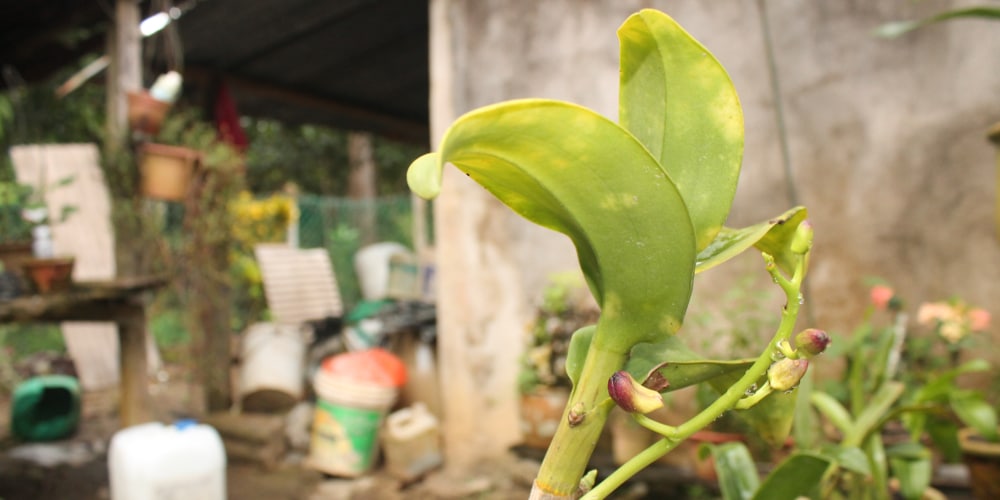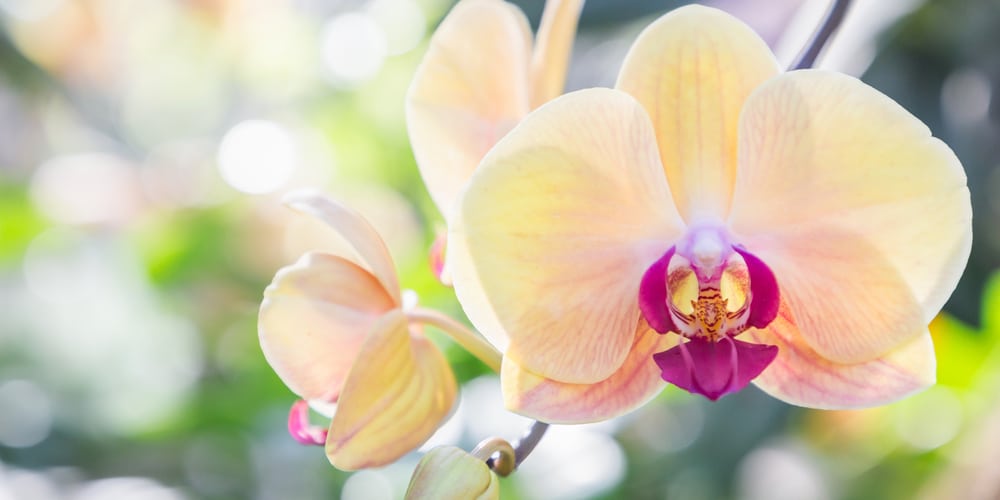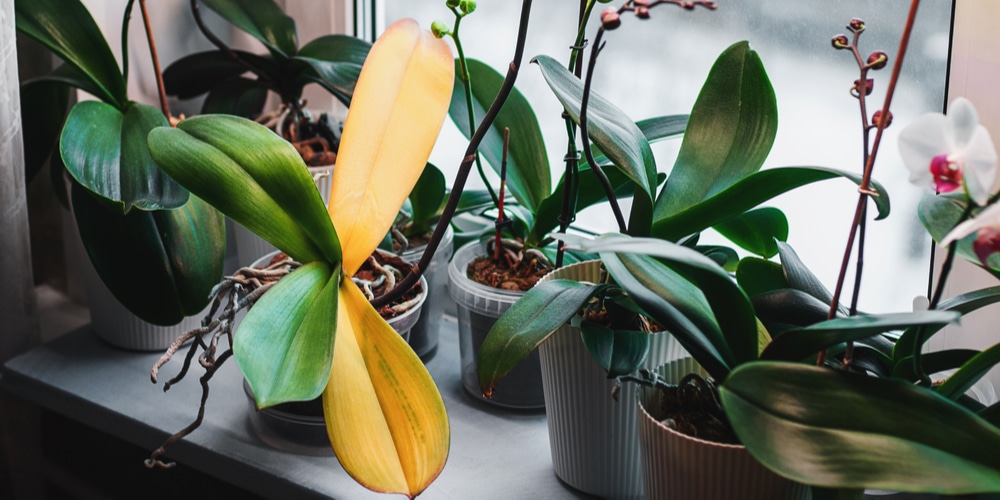Do you love the smell of orchids? The delicate, sweet fragrance that seems to fill the room when you enter? Many people do, and orchids have been prized for their beauty and scent for centuries.
But if you’re the owner of an orchid, that sweet smell can turn to worry pretty quickly if you notice the leaves drooping. Orchids are fussy plants, and they can be sensitive to changes in their environment. If your orchid’s leaves are wilting, it could signify that something is wrong.
While this isn’t a cause for panic, it’s essential to look at your plant and see what might be causing the problem. There are a few different things that can cause orchid leaves to wilt, and we’ll go over some of the most common ones below.
What Causes Orchid Leaves to Droop and Wilt?
There’s no denying that any home setting is made cheerful with the presence of an orchid plant. Its festive vibe, colorful flowers, lush green foliage, and sweet fragrance make it a favorite houseplant. But all of a sudden, you see its leaves drooping, and you start to worry.
Don’t fret just yet, as there are several reasons why orchid leaves wilt. Let’s take a look at some of the most common causes:
Overwatering
Similar to other house and ornamental plants, orchids don’t like it when they are overwatered. When orchids are overwatered, the leaves start to wilt, and the plants can become waterlogged. If you see that the leaves are wilting and they are accompanied by yellowing or brown spots, this is a sure sign of overwatering.
You’ll notice that aside from wilting, its leaves will look wrinkled, and the pseudobulbs will start to soften. If you see these signs, it’s best to stop watering your orchid for a few days and let the soil dry out. After a few days, check the soil again before watering to ensure it is completely dry.
Underwatering
While overwatering is detrimental to orchids, underwatering can be just as bad. When orchids don’t get enough water, the leaves will start to wilt and turn brown. This is because the plant isn’t getting the moisture it needs to stay hydrated.
Low or High Humidity Levels
Orchids are known for their delicate blooms, but did you know that they’re also quite particular about their environment? That’s why it’s not surprising to see orchid leaves wilting if the humidity levels in the room are either too low or too high. Dry air means that the plant tries to conserve moisture, and if it’s too humid, the plant gets more moisture than it’s supposed to.
The ideal humidity level for orchids is between 40% to 50%.
Can I Still Revive the Affected Orchid Leaves?
Unfortunately, those that are already wrinkled and turned yellow or brown due to overwatering or underwatering cannot be revived. Once the leaves are wilted, there is no turning back.
But if you catch the problem early enough and take measures to fix it, you might be able to save your orchid. If its leaves are still plump but starting to wilt, try increasing the humidity around your plant.
How to Fix Drooping Orchid Leaves
If you notice your orchid’s leaves wilting, immediate action is needed to prevent further damage to your plant. Here are some tips on how you can fix drooping orchid leaves:
Check the Soil
The first step is to check the soil. Is it too wet or too dry? If it’s wet, stop watering your orchid and let the soil dry out completely. If it’s dry, water your orchid and make sure the pot has drainage holes to avoid overwatering.
It also helps if you come up with a watering schedule that lets you know when to water your orchid next. This will take the guesswork out of watering and help ensure that your plant gets the hydration it needs without being overwatered.
You can always check the soil before giving your orchids a drink by sticking your finger in the potting mix. If the soil is dry up to your first knuckle, it’s time to water. If it’s a little moist, then it’s best to wait a few more days.
Increase the Humidity
Humidity is one of the most important factors when it comes to keeping orchids alive. The leaves will turn yellow and drop off if they don’t have enough of a moisture level in their environment, so place them on pebble trays filled with water or use a humidifier to increase the humidity around your orchid.
You can also mist your orchids regularly with water to help keep their leaves hydrated. Just be sure not to overwater them as this can lead to root rot.
Move Your Orchid to a Cooler Spot
If the temperature in the room is too warm, your orchid’s leaves will start to wilt. Move your plant to a cooler spot with an ambient temperature of 60-75 degrees Fahrenheit.
You can also place your orchid in front of an open window where it can get some indirect sunlight. Just make sure the temperature doesn’t drop too low, or your plant will go into shock.
Orchid leaves wilting: Final Thoughts
Like other plants, orchids need just the right amount of water, air, and sunlight to thrive. Too much of everything will kill your plant, so it’s crucial to find that delicate balance.
If you notice your orchid’s leaves wilting, take immediate action to fix the problem. By following the tips above, you can save your plant and keep it healthy for years to come.
Related Article: Spider Plant Leaves Wilting


